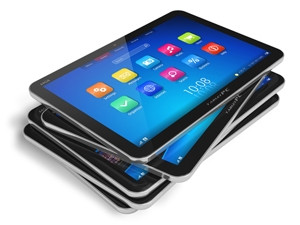
The tablet market in the Middle East and Africa (MEA) region continues to decline due to the reluctance of consumers to replace their exiting devices.
This is according to the IDC 'Middle East and Africa Quarterly Tablet Tracker' which notes the MEA tablet market contracted 8.8% year-on-year in the fourth quarter of last year, 12.3% in the first quarter of this year.
"We are finding that consumers are increasingly reluctant to replace their existing devices as the majority of tasks that were previously performed on tablets have now shifted to smartphones with larger screens," says Nakul Dogra, a senior research analyst for personal computing, systems, and infrastructure solutions at IDC.
"This reluctance has resulted in a lengthening of tablet replacement cycles, a phenomenon that has inevitably had a negative impact on overall demand."
Compounding the issue is the fact that consumer sentiment and business activity are both being hampered by low crude oil prices, particularly in the countries of the Gulf Cooperation Council, says Dogra.
Meanwhile, the continued depreciation of key African currencies against the US dollar - including the Nigerian naira, the South African rand, and the Egyptian pound - has also acted as an inhibitor, as poor exchange rates make tablets more expensive, he adds.
Anita Wang, notebook analyst for TrendForce, says the saturation of the tablet market, the long life cycles of tablets themselves and the abundance of substitute devices are major factors that contributed to the large shipment decline.
"Tablets were challenged by many large and small devices during 2015, from smartphones sized 5 inches and above to 2-in-1 PCs. Their demand diminished as a result," she explains.
In addition, Ranjit Atwal, research director at Gartner, says the steep drop is because the lifetime of tablets is being extended - they are shared out among family members and software upgrades, especially for iOS devices, keep the tablets current.
Another factor is the lack of innovation in hardware which causes consumers to refrain from upgrading, he adds.
"All vendors are feeling the pinch from the slowdown," says Fouad Rafiq Charakla, a senior research manager for personal computing, systems, and infrastructure solutions at IDC.
"Considering the thin margins on the lower-end products that account for the bulk of demand, vendors are unwilling to offer any further support to channels, leading to a decline in shipments across the region.
However, amid the market's overall slowdown is the growth of detachable tablets, which are steadily gaining popularity in the region following the introduction of various new devices in this product category, says IDC.
Detachable tablets now account for a 4.2% share of the overall tablet market, with shipments up by a staggering 335% year-on-year in first quarter of 2016, it adds.
In terms of vendor rankings, Samsung - which has the widest tablet portfolio - continued to lead the market in Q1 2016 with 21.2% share, despite suffering a year-on-year decline in shipments of 23.3%.
After a sluggish performance in Q4 2015, Lenovo retook second place with a 12.3% share, despite posting a 21.7% year-on-year decline in shipments, says IDC.
Apple rounded out the top three with 11.5% share after posting an 11% decline in shipments, it adds.
Share